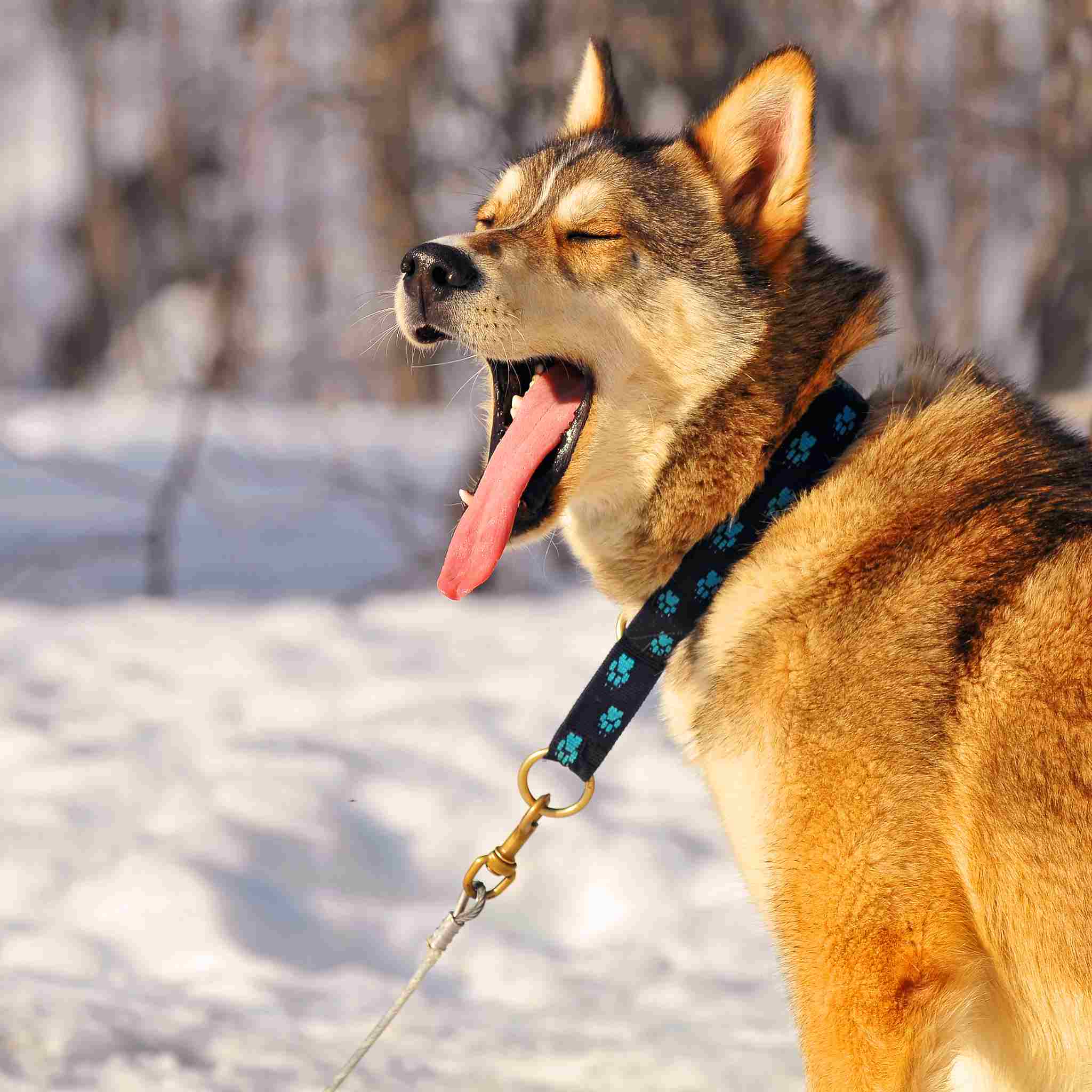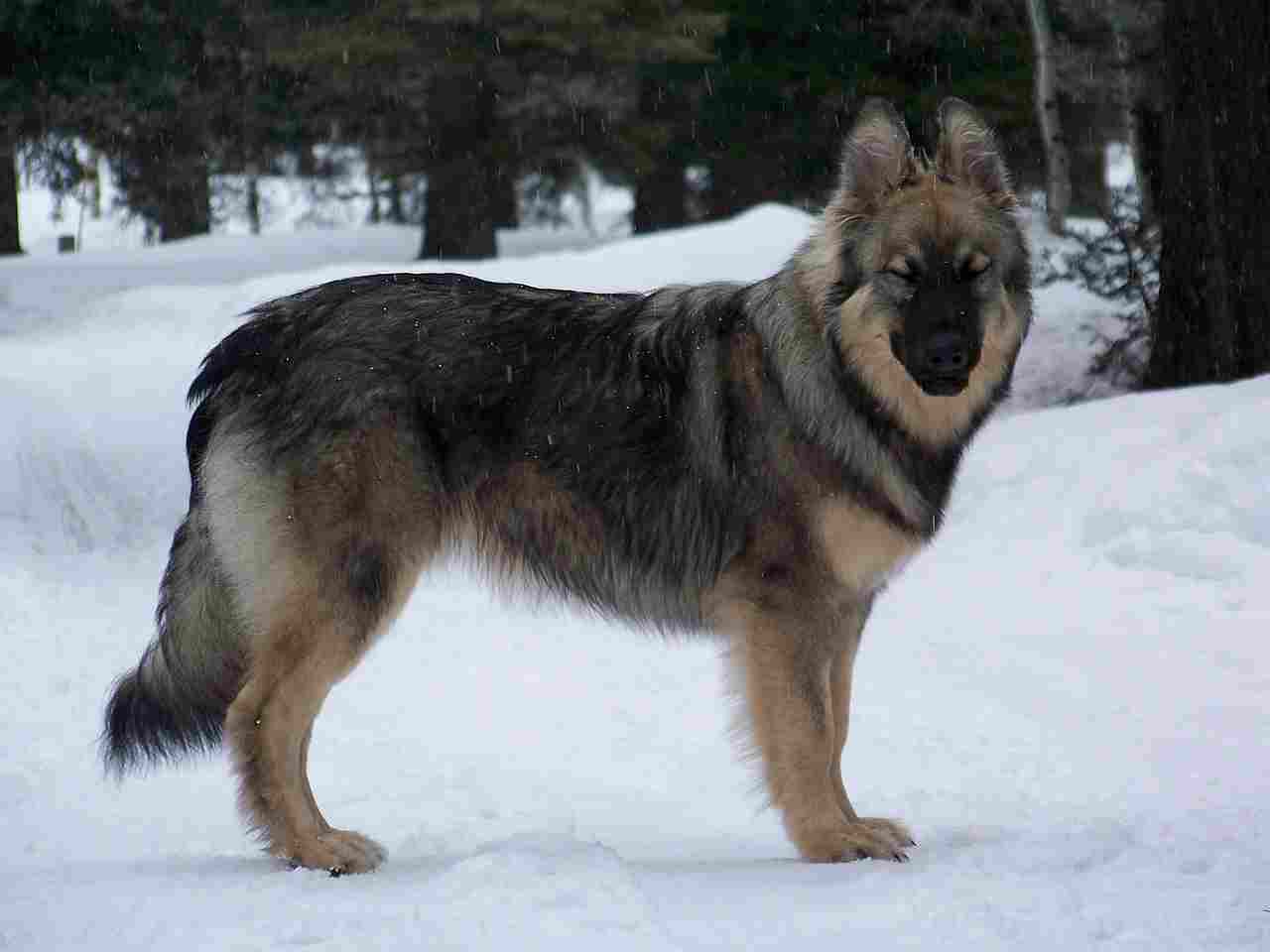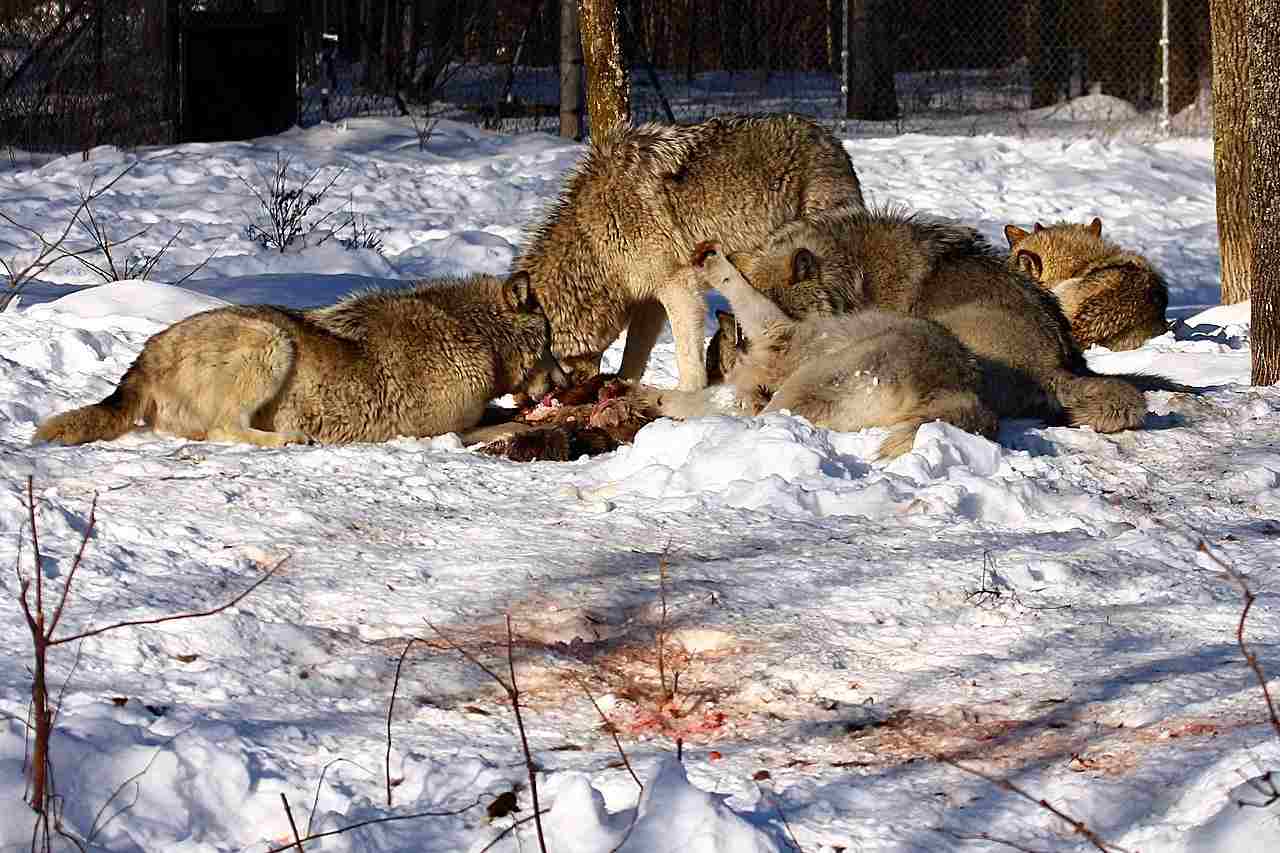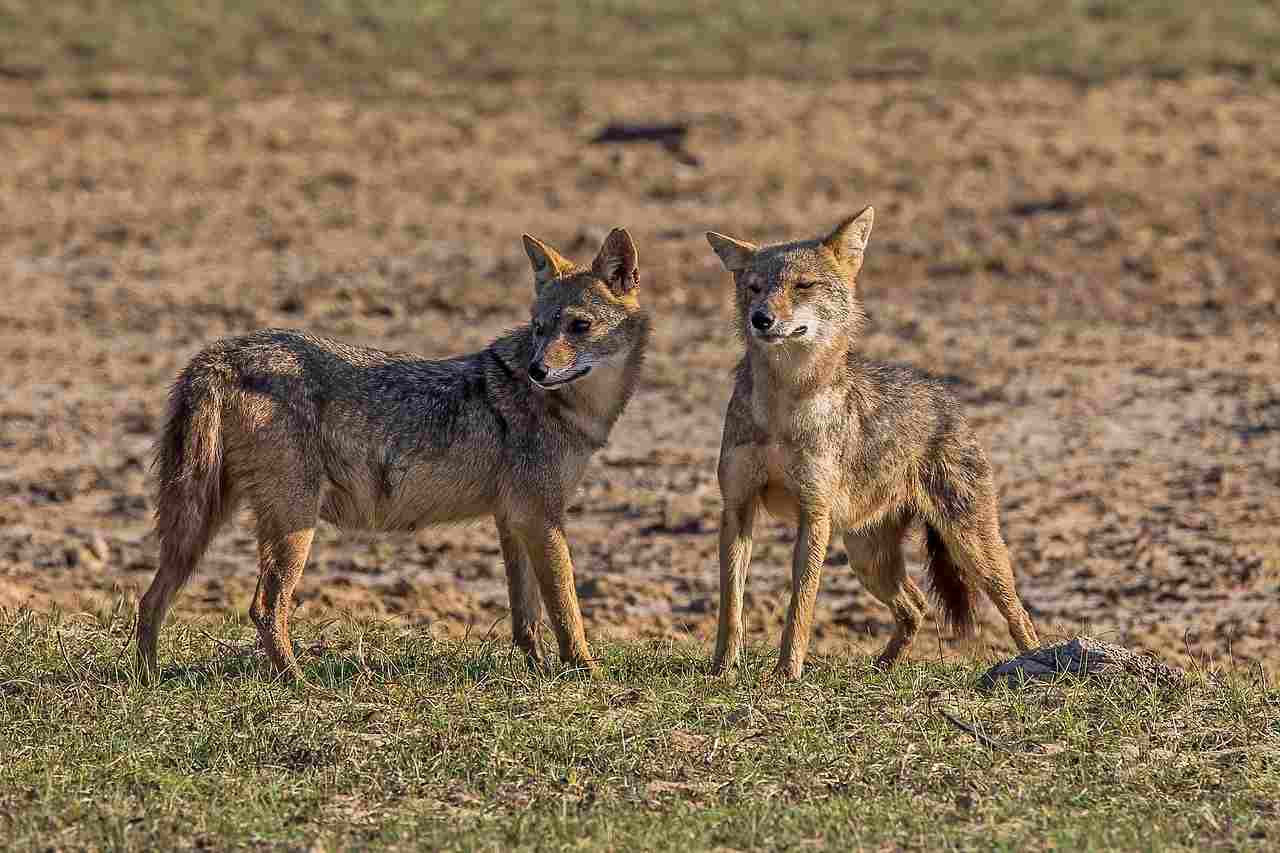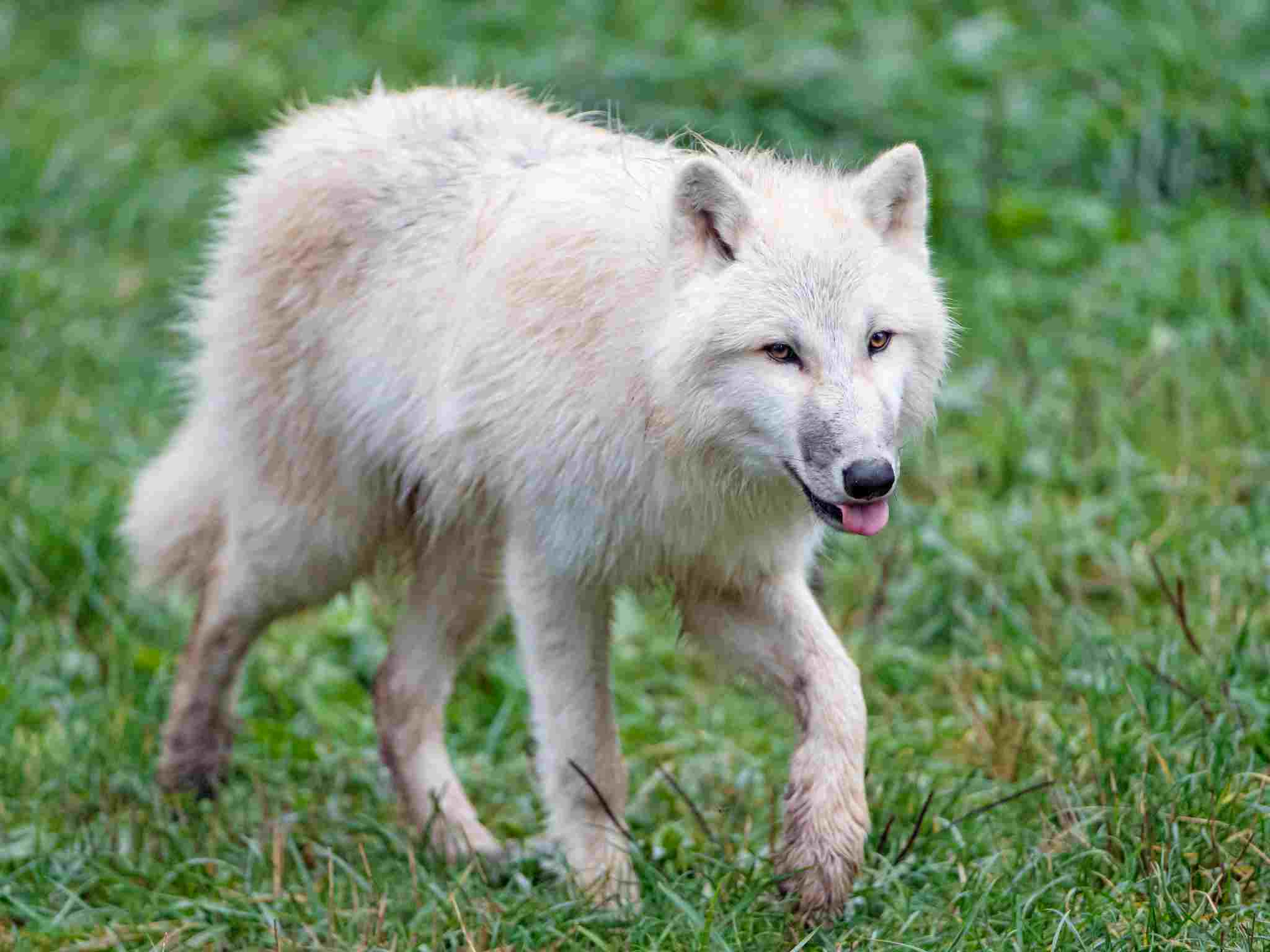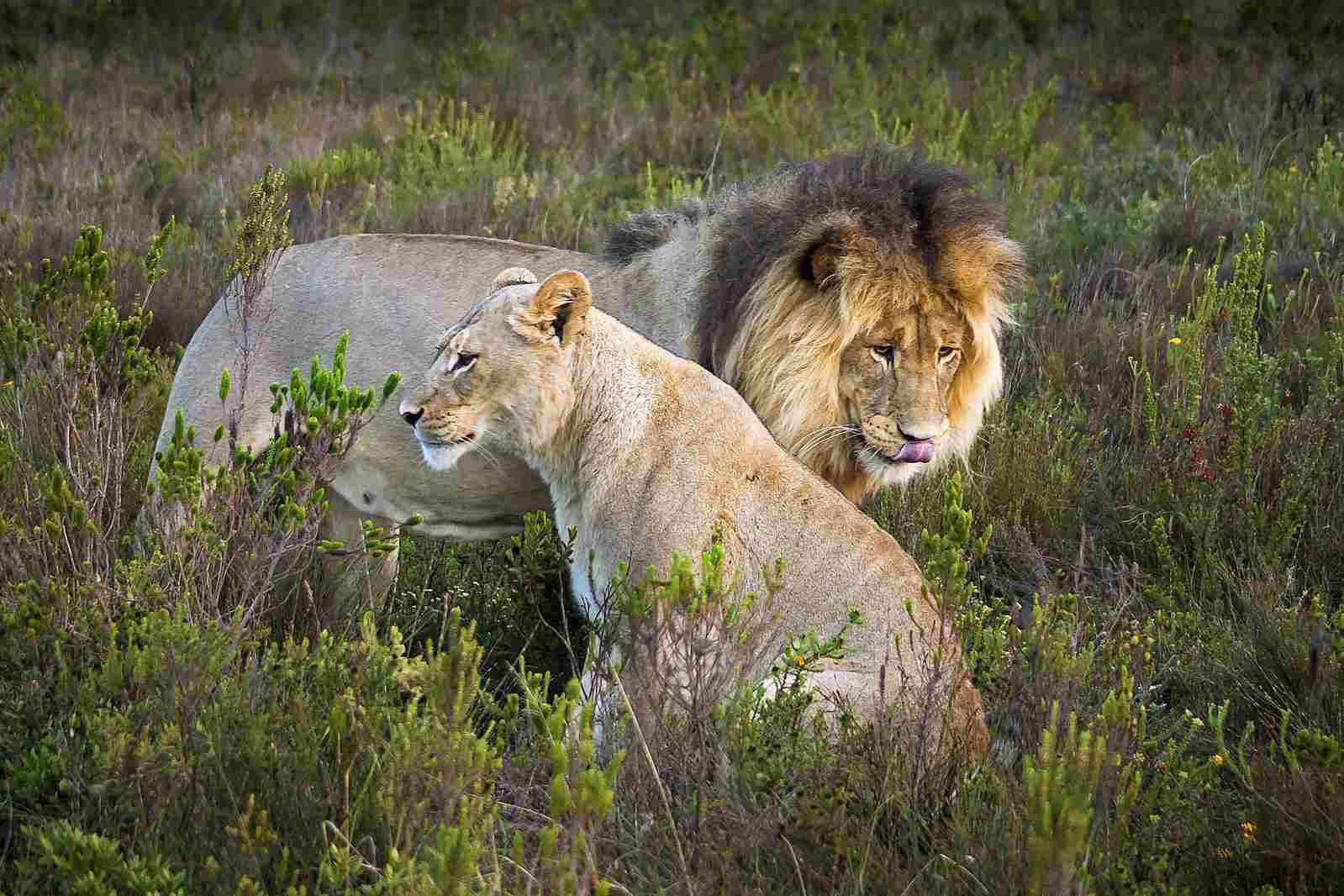Wolf Vs Husky: Differences Between Husky and Wolf Analyzed
In general, wolves are likely to overpower and kill huskies in a confrontation.
While it is true that wolves are larger and stronger than huskies, it is also important to consider various factors when comparing these animals. This article will delve into the taxonomy, appearance, size, weight, bite force, overall physical capacity, habitat, lifespan, behavior, reproduction, danger posed to humans, and conservation status of wolves and huskies.
Key Outcomes
*Biological Comparison
The biological comparison between wolves and huskies reveals interesting insights into their relationship. While both animals belong to the Canidae family, they are not closely related in terms of genus and species. Wolves are classified as Canis lupus, while huskies are classified as Canis lupus familiaris.
*Size and Weight Comparison
The size and weight comparison between wolves and huskies is an intriguing aspect to explore. When it comes to size, wolves are generally larger than huskies. Wolves can reach heights of up to 32 inches at the shoulder, while huskies typically stand around 23 inches. In terms of length, wolves can measure up to 6.5 feet from nose to tail, whereas huskies are usually around 4.5 feet long.
Moving on to weight, wolves are significantly heavier than huskies. Adult wolves can weigh anywhere between 70 to 120 pounds, with some individuals even exceeding 200 pounds. On the other hand, huskies have a more moderate weight range, typically weighing between 35 to 60 pounds.
*Physical Capability Comparison
Wolves are known to be stronger than huskies, thanks to their larger size and robust build. This strength difference can have significant implications in a confrontation between the two animals.
However, it’s important to note that the outcome of such a confrontation would depend on various factors, including the individual animals involved and the specific circumstances.
1). Taxonomy
The taxonomy of wolves and huskies reveals interesting insights into their evolutionary relationship. Both animals belong to the same genus, Canis, which includes other species such as the domestic dog and the coyote. However, they are classified as different species: the gray wolf (Canis lupus) and the Siberian husky (Canis lupus familiaris).
Despite their shared genus, there are distinct differences between the two species. Wolves are known for their larger size and more robust build compared to huskies. They have evolved to be highly adapted predators, with sharp teeth and powerful jaws. On the other hand, huskies have been selectively bred for their endurance and ability to pull sleds, resulting in a more slender and agile physique.
2). Appearance
The appearance of wolves and huskies showcases distinct differences in their coat, fur, and skin. Wolves typically have a thick, dense coat that provides insulation and protection in their natural habitats. Their fur can vary in color, ranging from gray to brown, and even white in some Arctic subspecies. This variation in coloration allows them to blend in with their surroundings, providing effective camouflage during hunting or territorial displays.
In contrast, huskies have a double coat that consists of a dense undercoat and a longer, weather-resistant topcoat. This double coat helps them withstand harsh weather conditions, especially in colder climates. Huskies come in a variety of colors and patterns, including black, white, gray, and combinations of these colors. Their coat patterns can be solid, piebald, or even sable.
In terms of stature and build, wolves are generally larger and more robust compared to huskies. Wolves have a strong, muscular body with a deep chest and a broad head. Their legs are long and powerful, enabling them to cover long distances and chase down prey.
On the other hand, huskies have a more slender and agile physique, which is ideal for their role as sled dogs. They have a medium-sized body with a well-proportioned build, allowing them to efficiently pull sleds over long distances.
3). Size
When comparing the size of wolves and huskies, there are notable differences in their total body length and height at the shoulders. Wolves are generally larger than huskies, with an average body length ranging from 4 to 6.6 feet and a height at the shoulders of around 2.6 to 3.3 feet. On the other hand, huskies have a smaller size, with an average body length of 3 to 4 feet and a height at the shoulders of about 1.8 to 2.2 feet.
The size difference between wolves and huskies is primarily due to their different evolutionary adaptations and roles in their respective environments. Wolves, as apex predators, have evolved to be larger and more powerful to effectively hunt and take down their prey. Their size allows them to intimidate and overpower their targets, ensuring their survival in the wild.
In contrast, huskies have been selectively bred for their sled-pulling abilities and endurance. Their smaller size and lighter build make them more agile and efficient in pulling sleds over long distances. This size difference also allows huskies to conserve energy and withstand the physical demands of sled dog racing and other activities.
4). Weight
When comparing the weight of wolves and huskies, there are significant differences between the two species. Wolves are generally much heavier than huskies, with an average weight ranging from 70 to 120 pounds for females and 90 to 160 pounds for males. On the other hand, huskies have a lighter build, with an average weight of 35 to 60 pounds for females and 45 to 60 pounds for males.
The weight disparity between wolves and huskies is a result of their distinct evolutionary adaptations and lifestyles. Wolves, being wild predators, require a larger body mass to support their hunting and survival needs. Their heavier weight provides them with the strength and endurance necessary to take down prey and defend their territories.
In contrast, huskies have been selectively bred for their agility and endurance in sled-pulling activities. Their lighter weight allows them to move swiftly and efficiently, pulling sleds over long distances without excessive strain. This lighter build also enables huskies to conserve energy and maintain their speed and agility, making them well-suited for their working roles.
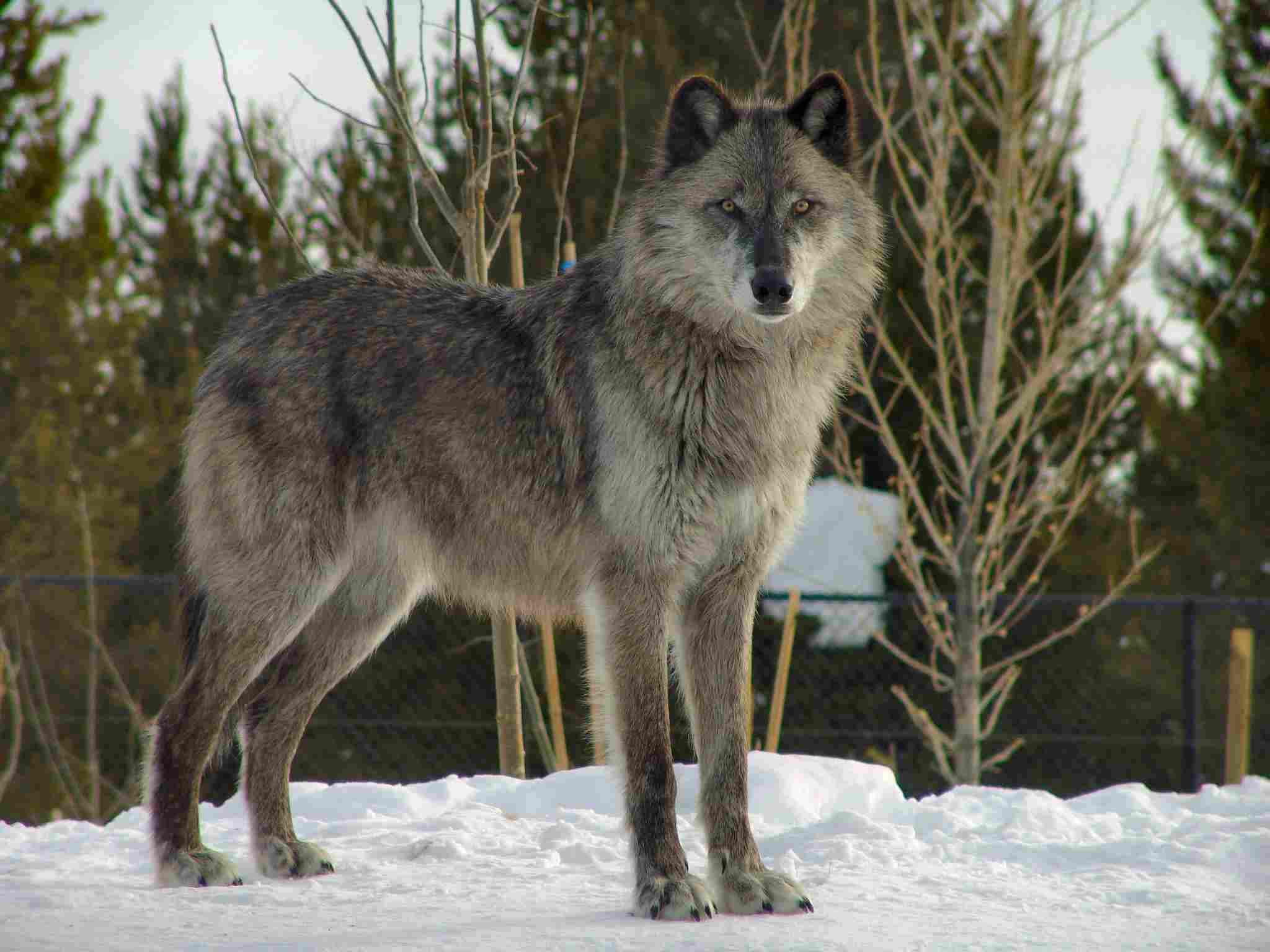
5). Bite Force
When comparing the bite force of wolves and huskies, there are notable differences between the two species. Wolves possess a significantly stronger bite force compared to huskies. With an average bite force of 400 to 1200 pounds per square inch (psi), wolves have evolved powerful jaws that allow them to exert immense pressure when biting down. This formidable bite force enables wolves to effectively capture and subdue their prey, as well as defend themselves against potential threats.
On the other hand, huskies have a comparatively weaker bite force. While exact measurements may vary, huskies generally have a bite force ranging from 320 to 400 psi. This lower bite force is a result of their selective breeding for sled-pulling activities rather than hunting. Huskies rely more on their endurance and speed rather than sheer biting power.
The difference in bite force between wolves and huskies reflects their distinct evolutionary adaptations and ecological roles. Wolves, as apex predators, require a strong bite force to secure their food sources and establish dominance within their pack. In contrast, huskies have been bred for their ability to work collaboratively in teams, pulling sleds over long distances.
6). Overall Physical Capacity
In terms of strength, wolves have the advantage. Their larger size, muscular build, and powerful bite force give them a significant edge over huskies. Wolves are built for hunting and taking down prey, which requires a high level of physical strength and agility. On the other hand, huskies are bred for endurance and speed, making them better suited for long-distance sled pulling rather than direct physical confrontations.
In a violent confrontation between a wolf and a husky, the outcome would likely depend on various factors such as the size and age of the individuals involved, their level of aggression, and the specific circumstances of the encounter. While a wolf generally has the physical advantage, a husky may be able to use its speed and agility to evade or escape from a wolf’s attack.
Overall, when considering the overall physical capacity of wolves and huskies, it is clear that wolves possess greater strength and physical capabilities.
7). Habitat
The habitat of wolves and huskies differs significantly due to their distinct natural environments and historical adaptations. Wolves are highly adaptable and can be found in a wide range of ecosystems, including forests, tundra, grasslands, and mountains. They have a vast geographic range, spanning across North America, Europe, Asia, and even parts of Africa. Wolves are known for their ability to thrive in diverse habitats, making them one of the most widely distributed land mammals.
On the other hand, huskies have a more limited habitat range. They are primarily found in colder regions, such as the Arctic and subarctic areas. Huskies have been bred and adapted to withstand harsh winter conditions, making them well-suited for snowy landscapes. Their thick double coat provides insulation and protection against extreme cold temperatures. Huskies are often associated with sled dog racing and are commonly found in regions like Alaska, Canada, and Siberia.
When comparing the habitat preferences of wolves and huskies, it is evident that wolves have a broader range and can adapt to various ecosystems, while huskies are more specialized for colder climates.
8). Lifespan
When comparing the lifespan of wolves and huskies, there are notable differences between the two. Wolves typically have a lifespan of 6 to 8 years in the wild, although some individuals have been known to live up to 13 years. In captivity, where they are protected from natural predators and have access to regular food and veterinary care, wolves can live up to 16 years or more.
On the other hand, huskies generally have a longer lifespan compared to wolves. They typically live between 12 to 15 years, with some individuals reaching 16 years or more. This longer lifespan can be attributed to the domestication and selective breeding of huskies, which has resulted in improved overall health and reduced exposure to natural threats.
Factors such as diet, genetics, and environmental conditions can also influence the lifespan of both wolves and huskies. Wolves in the wild face various challenges, including predation, competition for resources, and exposure to diseases, which can impact their longevity. Huskies, being domesticated animals, benefit from regular veterinary care, balanced diets, and a controlled environment, which contribute to their extended lifespan.
9). Behavior
Feeding behavior is one area where wolves and huskies differ. Wolves are known for their hunting behavior, as they are carnivorous animals that primarily feed on large ungulates such as deer and elk. They are skilled predators that work together in packs to bring down their prey.
On the other hand, huskies have been domesticated for centuries and have adapted to a diet that includes both meat and plant-based foods. They are typically fed a balanced diet of commercial dog food, which provides them with the necessary nutrients for their energy needs.
Aggression is another aspect where wolves and huskies differ. Wolves are naturally more aggressive due to their wild nature and their need to defend their territory and resources.
They have a hierarchical social structure within their packs, with dominant individuals asserting their authority over subordinate members. In contrast, huskies are generally friendly and sociable animals. They have been selectively bred for their friendly temperament and are known for their affectionate and playful nature.
In terms of social behavior, wolves are highly social animals that live in packs. They rely on cooperation and communication within the pack for hunting, raising young, and defending their territory. Huskies, on the other hand, are also social animals but are more adaptable to living in smaller groups or as single pets. They can form strong bonds with their human owners and other animals in the household.
When it comes to parenting behavior, wolves exhibit strong parental care within their packs. Both the alpha male and female play important roles in raising and protecting their offspring. Huskies, being domesticated animals, also display nurturing behavior towards their puppies, but they may not exhibit the same level of parental care as wolves.
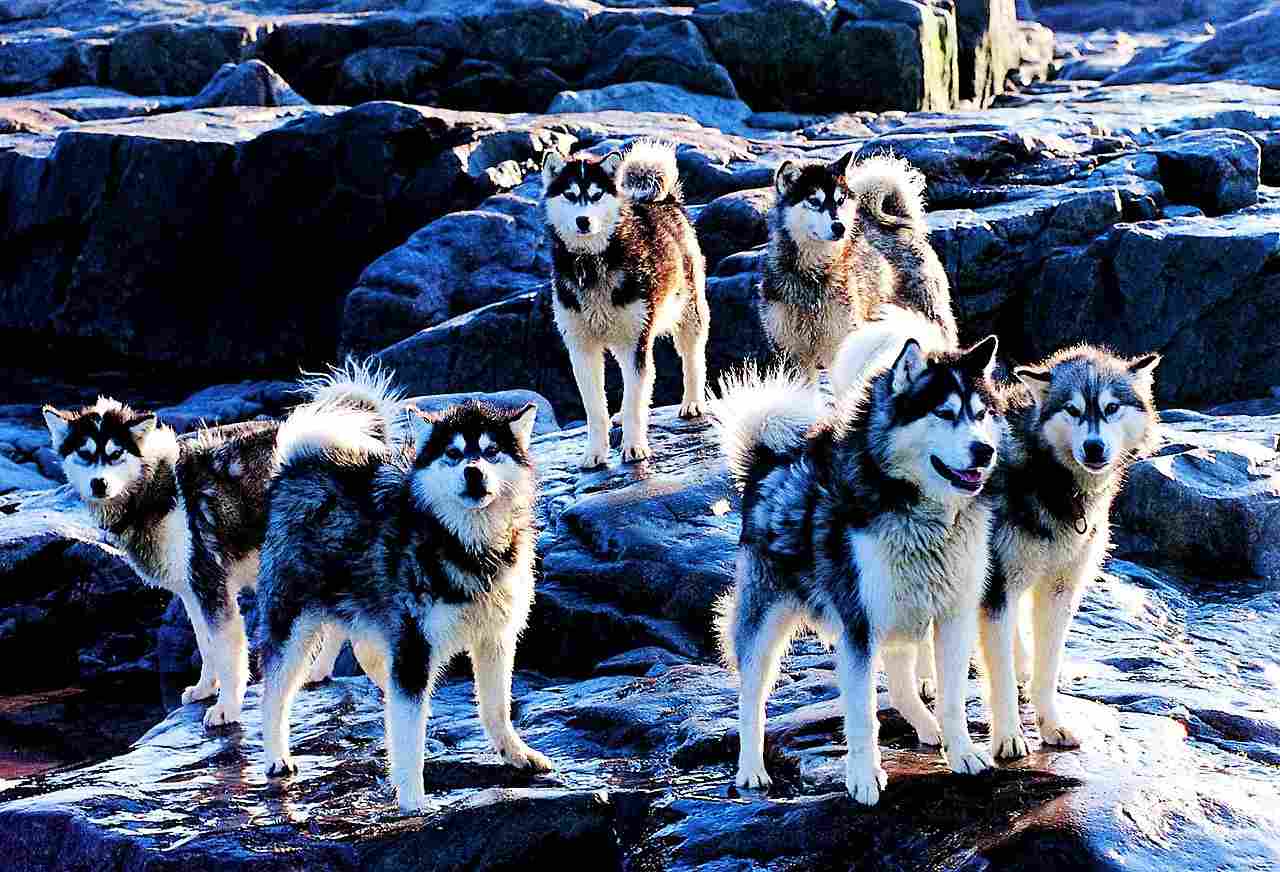
10). Reproduction
When it comes to reproduction, there are significant differences between wolves and huskies. Wolves are viviparous, meaning they give birth to live young. The gestation period for wolves is around 63 days, during which the female carries and nourishes the developing pups in her womb. In contrast, huskies are also viviparous, but their gestation period is slightly shorter, averaging around 58 to 63 days.
In terms of the number of offspring, wolves typically have larger litters compared to huskies. A wolf litter can consist of anywhere from 4 to 7 pups, while huskies usually have smaller litters of around 4 to 6 puppies.
Another difference lies in the parenting behavior of the two animals. Wolves have a strong pack structure, and both the alpha male and female play important roles in raising and protecting their offspring. They provide care, guidance, and teach the young ones essential survival skills. On the other hand, huskies, being domesticated animals, also display nurturing behavior towards their puppies, but they may not exhibit the same level of parental care as wolves.
11). Danger Posed to Humans
When it comes to the danger posed to humans, there are notable differences between wolves and huskies. While both animals have the potential to come close to human settlements, their behavior towards humans differs. Wolves, being wild animals, are generally more cautious and tend to avoid human contact. However, in rare cases where they have become habituated to humans or feel threatened, they may exhibit aggressive behavior. It is important to note that the rate of human deaths caused by wolves is extremely low.
On the other hand, huskies, as domesticated animals, are generally friendly and non-aggressive towards humans. They have been bred for centuries to work alongside humans and have a long history of being companions. However, it is always important to exercise caution when encountering any dog, including huskies, as individual behavior can vary.
If you do encounter a wolf or a husky, it is recommended to take certain precautions. Firstly, it is important to remain calm and avoid any sudden movements that may startle the animal. Backing away slowly and maintaining eye contact can help to assert dominance without provoking aggression. It is also advisable to avoid direct eye contact with wolves, as they may perceive it as a threat.
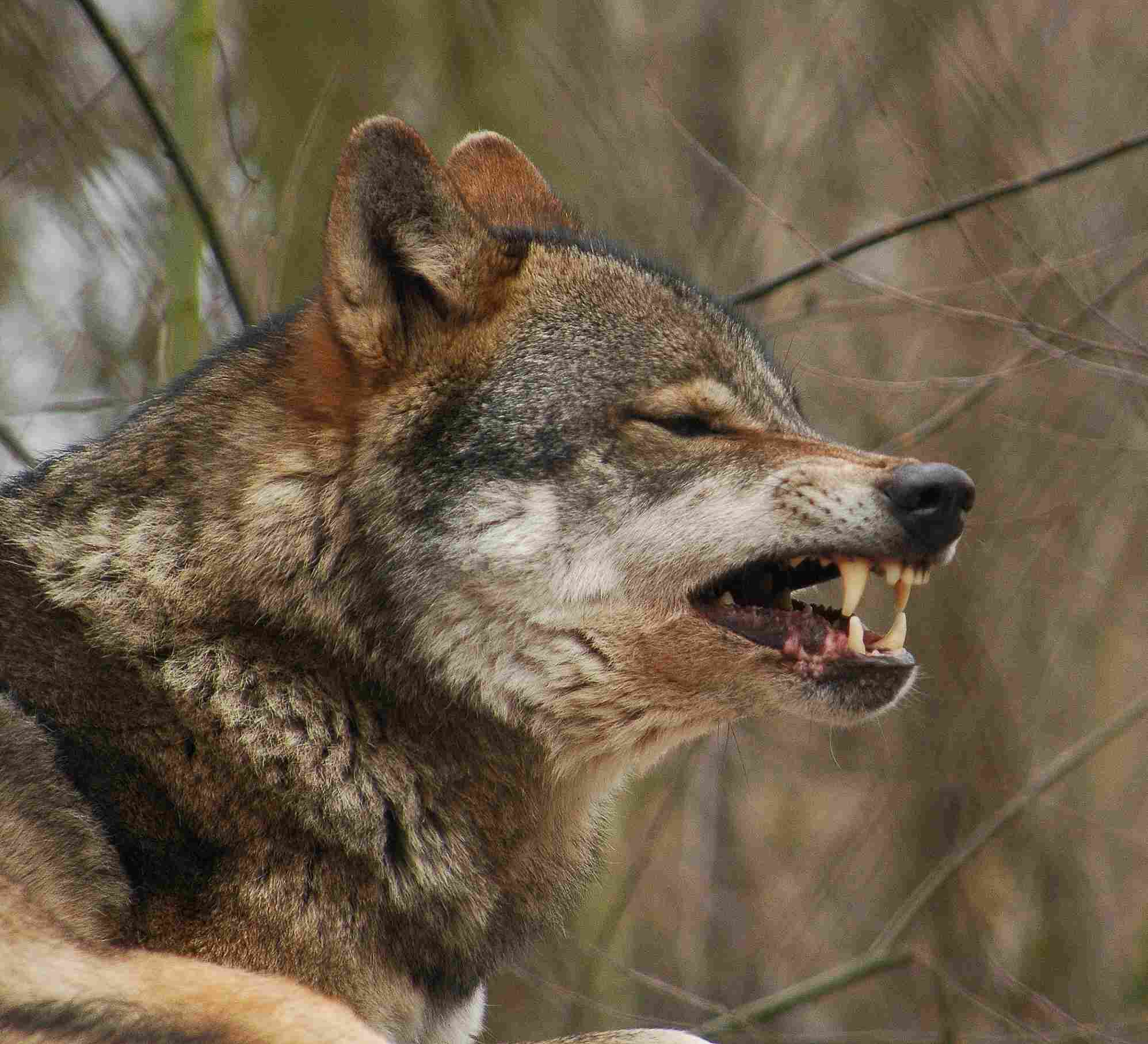
12). Conservation Status
The conservation status of wolves and huskies differs significantly. Wolves are classified as either endangered or threatened in many regions due to habitat loss, hunting, and human-wildlife conflict. These factors have led to a decline in their population, making conservation efforts crucial for their survival. Conservation organizations work to protect wolf habitats, regulate hunting practices, and promote coexistence between wolves and humans.
On the other hand, huskies, as domesticated animals, do not face the same conservation concerns as wolves. They are not listed as endangered or threatened because they are bred and raised in captivity for various purposes, including companionship and sledding, although some species like the Sakhalin husky, are faced with conservation challenges.
However, responsible breeding practices and proper care are essential to ensure the well-being of huskies and prevent overpopulation or neglect.
While wolves and huskies share similarities in their physical appearance and behavior, their conservation needs are distinct. Wolves require protection and conservation efforts to preserve their wild populations, while huskies rely on responsible ownership and breeding practices to maintain their well-being as domesticated animals.

Conclusion
I). SIMILARITIES
In comparing wolves and huskies, several similarities can be observed. Both animals belong to the Canidae family and share common physical characteristics such as a bushy tail, erect ears, and a thick double coat. Additionally, both wolves and huskies are highly social animals that live in packs or groups. They exhibit similar behaviors such as howling, marking territory, and engaging in cooperative hunting strategies.
II). DIFFERENCES
Despite their similarities, there are also notable differences between wolves and huskies. Wolves are wild animals, while huskies are domesticated breeds. Wolves have a larger size and weight compared to huskies, with an average weight of 80 to 100 pounds for wolves and 35 to 60 pounds for huskies.
Wolves have a more powerful bite force, which is essential for hunting and survival in the wild, whereas huskies have been selectively bred for their endurance and pulling capabilities.
In terms of habitat, wolves primarily inhabit wilderness areas such as forests, tundras, and mountains, while huskies are adaptable to various environments but are commonly found in colder regions. Wolves have a longer lifespan in the wild, averaging around 6 to 8 years, while huskies can live up to 12 to 15 years with proper care.
